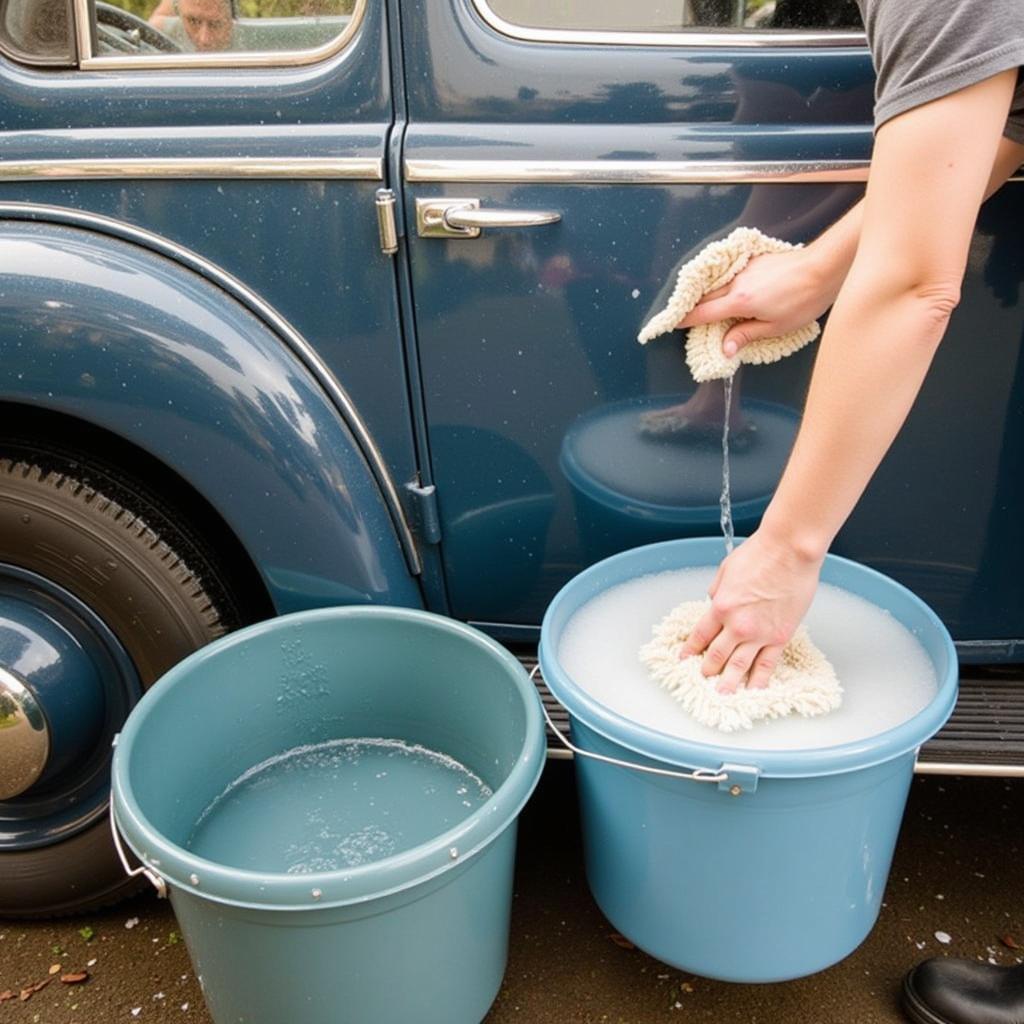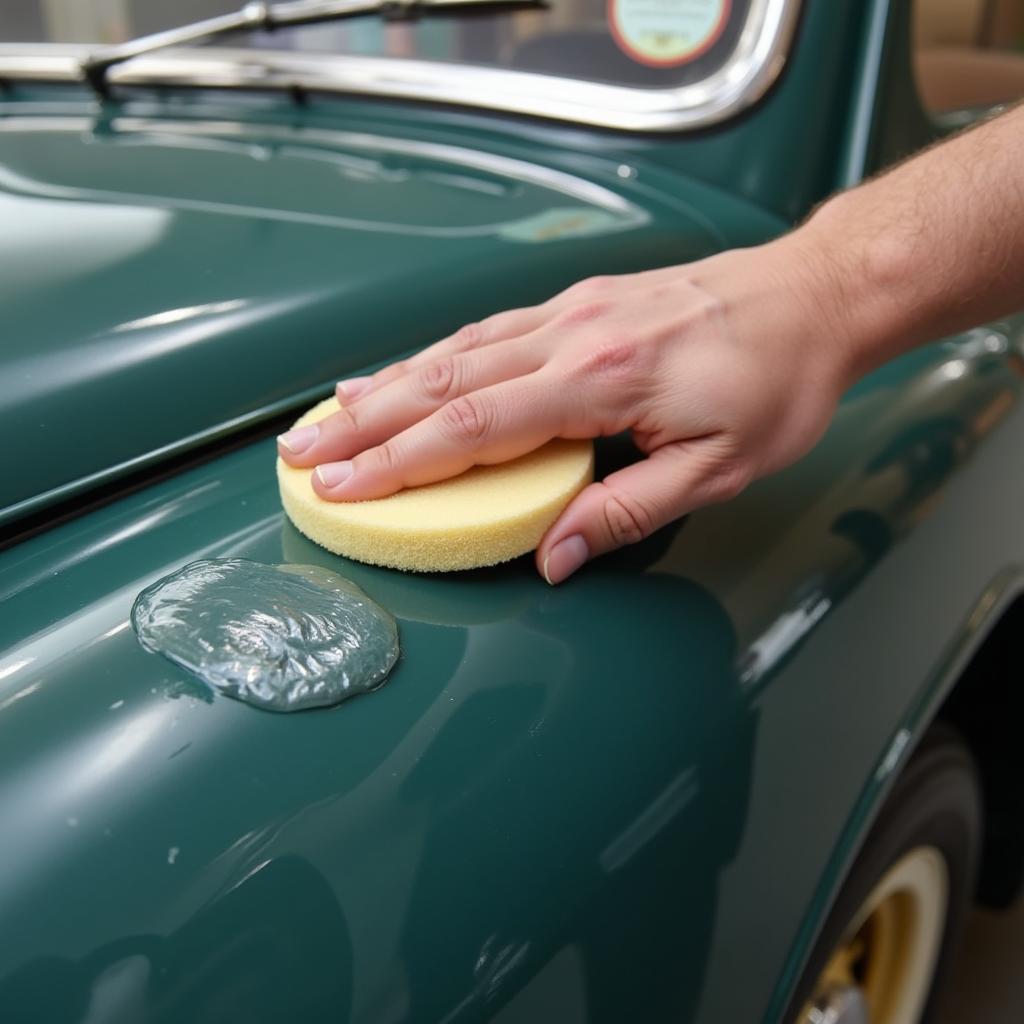Detailing an antique car is more than just a wash and wax; it’s a delicate process of preservation and enhancement. It requires specific techniques and products to protect the vehicle’s historical integrity and value. This guide provides a comprehensive approach to How To Detail An Antique Car, ensuring its beauty endures for generations to come.
Understanding the Nuances of Antique Car Detailing
Antique cars require a gentler approach than modern vehicles. Their paint, chrome, and leather are often more fragile and susceptible to damage from harsh chemicals or abrasive techniques. Therefore, understanding the specific needs of your antique car is crucial for successful detailing. This includes identifying the type of paint, the condition of the chrome, and the type of leather used in the interior.
Assessing the Condition of Your Antique Car
Before you begin detailing, thoroughly assess the car’s condition. Note any scratches, rust spots, or areas of concern. This will help you determine the appropriate cleaning methods and products. A careful inspection will also reveal any delicate areas that require extra attention.
Gathering the Right Supplies
Choosing the right products is paramount. Avoid harsh chemicals and abrasive cleaners. Opt for pH-neutral car wash soaps, soft microfiber towels, and dedicated leather conditioners designed for older leathers.
Washing and Drying Your Antique Car
Washing an antique car requires a gentle touch. Use a low-pressure hose and a pH-neutral car wash soap specifically designed for classic cars. Avoid using automated car washes, as they can be too harsh for delicate paint. Work in small sections, rinsing each area thoroughly to prevent soap from drying on the surface. When drying, use soft, clean microfiber towels to minimize the risk of scratching.
Hand Washing Techniques for Antique Cars
Hand washing is always recommended for antique cars. This allows for greater control and minimizes the risk of damage. Use two buckets: one with soapy water and another with clean water for rinsing your wash mitt. This prevents cross-contamination and reduces the risk of swirling.
 Hand washing an antique car using the two-bucket method
Hand washing an antique car using the two-bucket method
Protecting the Paint and Chrome
Once the car is dry, you can apply a protective layer of wax or sealant. This will help protect the paint from the elements and enhance its shine. For chrome, use a dedicated chrome polish to restore its brilliance. Avoid abrasive polishes, as they can scratch the surface.
Choosing the Right Wax or Sealant
For antique cars, a high-quality carnauba wax is often preferred for its deep, rich shine. Alternatively, a synthetic sealant can provide longer-lasting protection. Consult with a classic car expert to determine the best option for your specific car’s paint.
 Applying a protective layer of wax to an antique car’s paint
Applying a protective layer of wax to an antique car’s paint
Detailing the Interior of an Antique Car
The interior of an antique car often features delicate leather, wood, and fabrics. Use specialized cleaners and conditioners designed for these materials. Avoid using harsh chemicals or all-purpose cleaners, as they can damage the original materials.
Caring for Antique Leather
Antique leather requires special care. Use a leather cleaner specifically formulated for older leathers, followed by a conditioner to keep the leather supple and prevent cracking.
Maintaining Your Antique Car’s Detail
Regular maintenance is essential for preserving your antique car’s detail. Wash the car regularly, using the gentle methods described above. Apply a fresh coat of wax or sealant every few months to maintain the paint’s protection. Keep the interior clean and conditioned to prevent deterioration.
Conclusion
Detailing an antique car is a rewarding process that requires patience and attention to detail. By following these steps and using the right products, you can preserve your classic car’s beauty and value for years to come. Remember, maintaining the original integrity of your antique car is key, so always opt for gentle methods and specialized products. How to detail an antique car effectively becomes easier with practice and the right knowledge.
FAQ
-
What type of soap should I use to wash an antique car? Use a pH-neutral car wash soap specifically designed for classic cars.
-
Can I use an automatic car wash on my antique car? No, automated car washes can be too harsh for delicate paint.
-
What is the best way to dry an antique car? Use soft, clean microfiber towels.
-
What type of wax is best for antique cars? A high-quality carnauba wax is often preferred for its deep shine.
-
How do I care for antique leather? Use a leather cleaner and conditioner specifically formulated for older leathers.
-
How often should I wax my antique car? Apply a fresh coat of wax or sealant every few months.
-
Where can I find specialized products for detailing antique cars? Reputable auto parts stores specializing in classic cars often carry these products.
Have other questions? Check out these articles: [link to other relevant articles on your website]
Need more help? Contact us via WhatsApp: +1(641)206-8880, Email: [email protected]. Our 24/7 customer service team is ready to assist you.

Leave a Reply